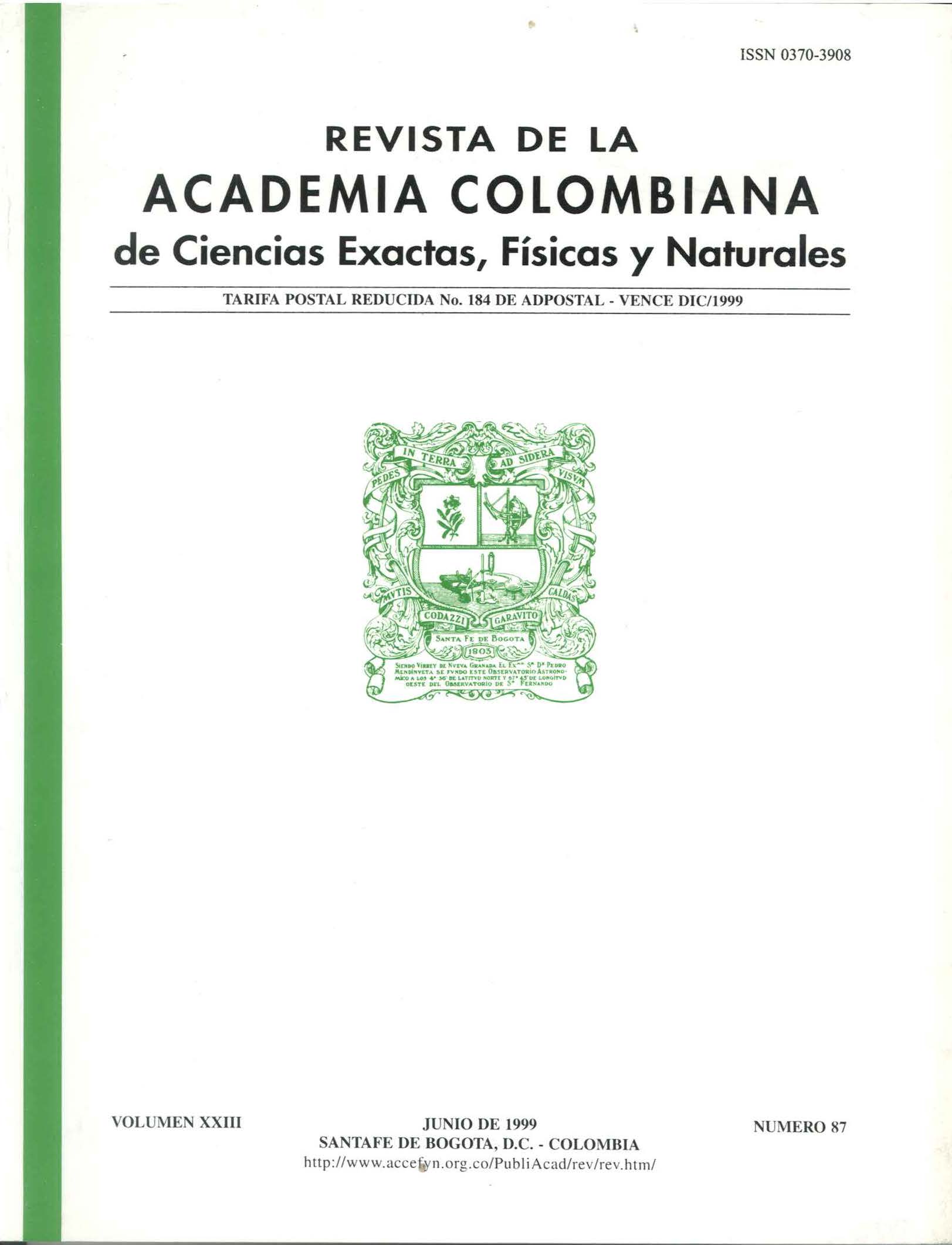Resumen
Sodiroa s. I es un grupo de especies considerado actualmente dentro de Guzmania (Bromeliaceae). Está formado por los complejos Massangea y Sodiroa s.s., los cuales fueron considerados como géneros independientes en el pasado. Se somete a prueba la monofilia de los grupos y la relación de parentesco entre ellos. Para el análisis se construyó una matriz con 25 caracteres morfológicos y 16 taxones: 12 como grupo interno (7 Sodiroa s.s. y 5 Massangea) y 4 como grupo externo. Los caracteres fueron analizados con pesos iguales, sucesivos e implicados. En todos los análisis Sodiroa s.s. y s. I aparecen como grupos monofiléticos, mientras que Massangea no es un grupo natural. Se propone que Sodiroa s. I. podría reestablecerse como género.
Referencias
Bremer, K. 1988. The limits of amino acid sequence data in angiosperm phylogenetic reconstruction. Evolution 42:795-803.
Coddington, J. & N. Scharff. 1994. Problems with zero length branches. Cladistics 10:415-423.
Farris, J.S. 1989. The retention index and the rescaled consistency index. Cladistics 5:417-419.
Gilmartin, A.J. & G.K. Brown. 1987. Bromeliales, related monocots, and resolution of the relationships among Bromeliaceae subfamilies. Syst. Bot. 12: 493-500.
Goloboff, P.A. 1993. Estimating character weights during tree search. Cladistics 9:83-92
Goloboff, P.A. 1998. Pewee-Nona Reference Manuals. Versions Peewee 3.0 Nona 2.0. Publicado por el auttor [Demo disponible en http:vims.edu/~meshennig].
Grant, J.R. 1995. The resurrection of Alcantarea and Werauhid. a new genus. Bromelienstudien. Tropische und Subtropische Pflanzenwelt 91: 5-57.
Grant, J.R & G. Zijlstra. 1998. An annoted calalogue of the generic names of the Bromeliaceae. Selbyana 19 (1): 91-121.
Kluge, A.G. 1997. Testability and the refutation and corroboration of cladistic hypotheses. Cladistics 13: 81-96.
Luther, H. & W. J. Kress. 1996. Two overlooked species of Guzmania (Bromeliaceae) of the speciescomplex Massangea from Central America. Brittonia 48 (1): 91-95.
Nixon, K.C. 1996. Clados. version 1.6. Program and Documentation. Published by the author. Ithaca, New York.
Smith, L.B. & R.J. Downs. 1974. Pitcairnioideae, Bromeliaceae. Flora Neotropica 14 (1): 1-660.
Smith, L.B. 1977. Tillandsioideae, Bromeliaceae. Flora Neotropica 14 (2): 661-1492.
Smith, L.B. 1979. Bromelioideae. Bromeliaceae. Flora Neotropica 14 (3): 1493-2142.
Spencer, M.A. & L.B. Smith. 1993. Racinaea, a new genus of Bromeliaceae (Tillandsioideae). Phytologia 74: 151-160.
Swofford D.L. 1999. PAUP*. Phylogenetic analysis using parsimony and other methods. Implemetación de Software.
Swofford D.L. & D.P. Begle. 1993. User's Manual for PAUP. Phylogenetic Analysis Using Parsimony, Version 3.1. Illinois Natural History Survey, Chicago.
Terry, R.G. & G.K. Brown. 1996. A study of evolutionary relationships in Bromeliaceae based on comparison of DNA sequences from the chloroplast gene udhF. Journal of Bromeliad Society 46 (3): 107- 112, 123.
Terry, R.G. 1997. Phylogenetic relationships in Subfamily Tillandsioideae (Bromeliaceae) using ndhf sequences. Syst. Bot. 22 (2): 333-345.
Terry, R.G. & R.G. Olmstead. 1997. Examination of subfamilial phylogeny in Bromeliaceae using comparative sequencing of the plastid locus ndhF. Amer. Journal of Bot. 84(5): 664-670.

Esta obra está bajo una licencia internacional Creative Commons Atribución-NoComercial-SinDerivadas 4.0.
Derechos de autor 2024 Revista de la Academia Colombiana de Ciencias Exactas, Físicas y Naturales

